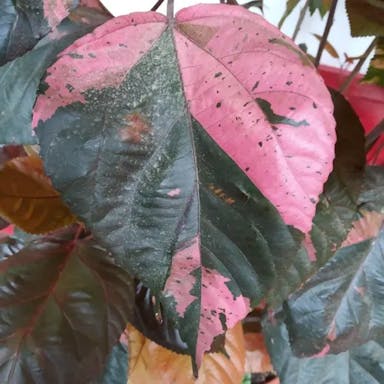Whiteleaf manzanita gives different types like 'Dr. Hurd' and 'Louis Edmonds' that have their own features. 'Dr. Hurd' has bigger leaves and grows more upright, good for landscaping. 'Louis Edmonds' grows compact and has special white leaves, perfect for small areas or pots. When getting seeds, pick fresh, plump ones with no damage. For seedlings, choose ones with good roots, healthy leaves and no wilting. Make sure the seller gives specifics on the type so it meets your needs.
Whiteleaf manzanita
- Scientific name
- Arctostaphylos manzanita
Basic Information
- Ericaceae Family Arctostaphylos Genus Whiteleaf manzanita Species
- Ericaceae > Arctostaphylos > Arctostaphylos manzanita
- 0%
- The Completeness of This Encyclopedia
Please help us complete the encyclopedia, Terrarium is a encyclopedia service to be completed with everyone in the world. Currently, this page is 0% complete. For more information on how to contribute, please click here.
- Shrub
- Height
- 100cm ~ 600cm
- Flower Color
- Leaf Color
- Anthesis
- spring
- Sunlight Exposure
Full Sun Long hours of sunlight from morning to afternoon Partial Shade A location in the shade of a tree or where either the morning or afternoon is shaded Full Shade A place where there is no direct sunlight
- Full Sun
- Hardiness Zones
This is an indicator to know to which zone each plant can winter. Knowing the zone of each plant gives you an idea of the cold temperature resistance when grown in the ground without a roof. 2: -42.7 to -40.0 3: -39.9 to -34.4 4: -34.3 to -28.9 5: -28.8 to -23.3 6: -23.2 to -17.8 7: -17.7 to -12.2 8: -12.1 to -6.7 9: -6.6 to -1.1 10: -1.0 to 4.4 11: 4.5 to 10.0
- 7
- Cold resistance
- Good
- Heat resistance
- Excellent
- Habitat of origin
- United States
- Growth Rate
- Normal
What is Whiteleaf manzanita (Arctostaphylos manzanita)?
What is Whiteleaf manzanita (Arctostaphylos manzanita)
NO DATA
Flower meaning
NO DATA
Calendar of Whiteleaf manzanita (Arctostaphylos manzanita)
Calendar
NO DATA
How to grow Whiteleaf manzanita (Arctostaphylos manzanita)
Watering
NO DATA
Soil and Fertilizer
NO DATA
Sunlight and Place
NO DATA
Advanced Information of Whiteleaf manzanita (Arctostaphylos manzanita)
Pruning
NO DATA
Planting and Harvest
NO DATA
Propagation
NO DATA
Pests and Diseases
NO DATA
Habitat of Whiteleaf manzanita (Arctostaphylos manzanita)
Habitat
Toxicity of Whiteleaf manzanita (Arctostaphylos manzanita)
Health Benefits
- edible
- edible
- Toxic
- No toxicity
NO DATA
Toxic for dogs and cats
NO DATA
Q&A of Whiteleaf manzanita (Arctostaphylos manzanita)
- choice
- What animals eat whiteleaf manzanita?
Whiteleaf manzanita, scientifically known as Arctostaphylos viscida, is a primary food source for various wildlife species. Manzanita, a plant native to North America, provides an important food source for wildlife in its ecosystem. The berries, leaves, and seeds are consumed by animals including deer, birds, squirrels and rabbits. The berries of the manzanita plant are especially appealing to birds. By eating the berries, the birds help disperse the seeds of the plant. Insects are also drawn to the flowers, assisting with pollination. Through providing nourishment and assisting with propagation, the whiteleaf manzanita fills a valuable ecological niche.
- What are the characteristics of the whiteleaf manzanita plant?
The perennial shrub recognized scientifically as Arctostaphylos viscida has leathery leaves. It grows natively in the western part of the United States. The shrub grows in dry habitats and so is adapted to places with wildfires. The small fruits look like little apples.












